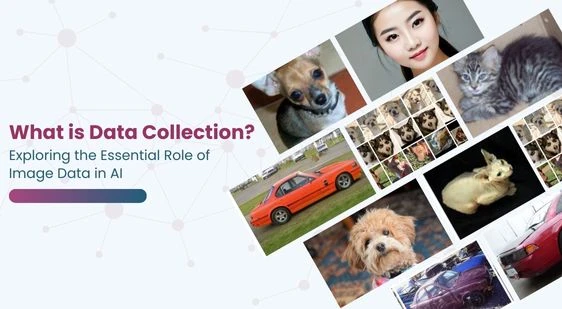Data collection is the careful collection of material from different places to solve problems, try things out, and to judge what happened in practice. It is a major job in a lot of disciplines, such as scientific research, business analysis, healthcare, and especially artificial intelligence (AI). In the field of.ai, data is the very fuel that makes the machine learning algorithms powerful, thus it enables these algorithms to recognize the patterns, make decisions, and forecast the results.
Data can be found in various forms, each of which, uniquely, contributes to the AI’s ability. The most frequent include text, picture, audio, and video data. Text data, such as social media posts or articles, is most commonly used for natural language processing (NLP). Audio datasets are important for voice recognition systems, whereas video data is included in tasks such as surveillance and autonomous driving. Image data turns out to be the most significant under the mentioned, especially in the field of computer vision.
Data Collection and Its Role in AI Development
Image data collection refers to the process of gathering visual information, normally in the form of photographs, scans, or any digital image, to train AI models. Yet unlike text or audio data, its peculiar unstructured nature and multidimensionality make image data be processed in a complex manner. Every image consists of thousands or even millions of pixels, each indicating color, brightness, and spatial relationships. Since image data is descriptive and therefore more complicated, its gathering is a very challenging yet fruitful project for AI development.
The importance of image data is that it instructs AI systems how to “see” and think about the visual world in the same way that humans do. Unlike text, which is processed linearly, an image must be analyzed in two or three dimensions, which requires sophisticated algorithms to find patterns, objects, and even emotions. For example, a machine learning model trained on a text data set can learn a lot about language, but it can’t be taught to recognize a face or to identify a cat in an image with only the text data.
Importance of Image Data Collection in AI
- Foundation for Computer Vision: Image data is fundamental to teaching AI systems how to interpret and understand. The visual world, mimicking human perception in two or three dimensions.
- Enhances AI Model Precision: High-quality and diverse image datasets enable AI models to be more accurate in predictions and classifications, improving their functionality.
- Supports Generalization: Large, varied datasets help AI models generalize better. Making them effective in real-world settings where they encounter diverse and unexpected data conditions.
- Critical for Specialized Applications: In fields like medical diagnostics. Well-labeled image datasets allow AI to perform tasks like disease detection with high accuracy.
Applications and Challenges of Image Data Collection
Applications:
- Healthcare: AI analyzes medical images (e.g., MRIs, CT scans) for accurate diagnoses, assisting healthcare professionals.
- Retail: Image recognition technologies facilitate virtual try-ons, inventory management, and personalized shopping experiences.
- Autonomous Vehicles: AI systems use image data from cameras and sensors to navigate roads. Avoid obstacles, and ensure safe driving.
- Social Media: Image data is crucial for content moderation. Helping AI systems detect and remove inappropriate or harmful images.
Challenges:
- Data Volume: Training AI models require vast amounts of image data. Which is resource-intensive and time-consuming to collect.
- Annotation Complexity: Images must be accurately labeled, often requiring significant human effort. Which can be labor-intensive and prone to errors.
- Ethical Concerns: Issues such as privacy, consent, and data security arise when collecting images. Particularly those involving individuals.
- Bias in Data: Biased image datasets can lead to AI models producing inaccurate or unfair results. Necessitating careful consideration in data collection and annotation.
Image Data Collection Services for AI
Professional image data collection services have become important for companies that need strong AI models because of the intricacy of the process. These services provide customized solutions for the collection. Marking and handling of bulk image data in a quick and precise manner.
At GTS, we specialize in providing high-quality image data collection services to support AI development. Our team leverages global resources and cutting-edge technology to collect diverse image datasets that meet the specific needs of our clients. Whether you require labeled images for a facial recognition system or annotated medical images for a diagnostic tool. We ensure that the data is of the highest quality and ethically sourced.
Using professional services like ours not only saves time and resources but also enhances the overall quality of your AI models. With accurate and diverse datasets, your AI system can achieve better performance. Leading to more reliable and impactful applications.
Conclusion
Data collection is the foundation upon which AI systems are built, and among the various types of data. Image data plays a particularly crucial role. From training computer vision models to enabling real-world applications. High-quality image data is key to developing effective AI solutions. As the demand for AI continues to grow. So does the need for reliable image data collection services.
By partnering with professionals, you can ensure that your AI projects are supported by the best possible data. Leading to more accurate, fair, and powerful outcomes. Explore our image data collection services today and take the next step in your AI journey.







